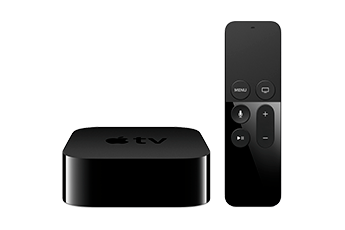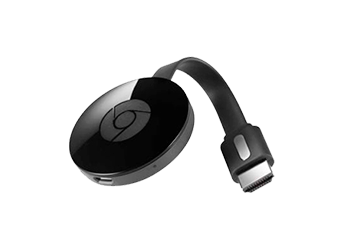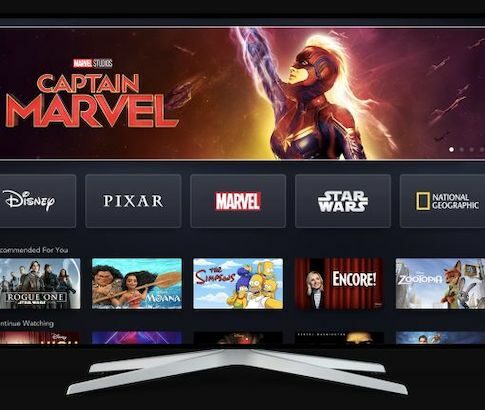
Just a few short years ago, the way most of us watched TV shows and movies was pretty old-school. We’d likely turn on the TV and see what was on – or set a recording to watch later and skip the ads. Then, we hoped the network stuck with a show right to and waited week after week for new episodes. And if we didn’t want our movie fun interrupted by ads every ten minutes, we’d head to the video library to rent a disc. Streaming video has changed all that, and it’s changed really quickly.
Australians have long had a voracious appetite for new technology. And while US consumers had access to streaming services for years before we did, the take-up of services like Netflix, Stan and the newly-relaunched Foxtel Now has been phenomenal. Millions of us are now getting a big chunk of our TV and movie entertainment via streaming.
Of course, you need more than just a capable broadband connection to use streaming video services. While you can easily watch using a web browser on your desktop PC or laptop, that’s not the sort of TV experience that lets you relax on the couch after a long day. You’ve got a big-screen TV sitting right there in the lounge room, after all. And regardless of whether it’s considered “smart” or not, it’s ready for streaming. All you need is a device to stream with.
Options, options
The range of streaming devices available in Australia is growing consistently. Unlike other countries where streaming TV has had a few more years to settle in, it’s mostly the big-brand-name devices that are popular here for now. That’s likely to change over coming years as the market continues to grow. More companies (such as Amazon) enter the fray, but the basic choices will remain the same – you’ve got the option of stand-alone boxes, compact “stick” devices, game consoles and of course, the TV itself if it has the smarts. Each of these has their advantages and disadvantages in terms of features and pricing.
Stand-alone boxes
These are sometimes called “set top boxes” – even though you’re unlikely to be able to balance anything on top of a modern flat-screen TV, and will have to find another surface for it to call home. Unlike the “set top boxes” for conventional TV – which tend to be large hi-fi-component style things – streaming boxes are compact and unobtrusive. They’re supplied with a remote control to navigate their on-screen menus. What’s great is that they can provide more flexibility with connections than other options. For example, they offer wired Ethernet connections for more reliable streaming, or extra digital audio outputs to make it easier to hook them up to your surround sound system for cinema-style audio.

Streaming sticks
Incredibly popular overseas, these tiny but powerful devices are still rare in Australia. The only one sold officially is Google Chromecast, which started life as a USB-stick style device but now resembles an air hockey puck. With Amazon heading to Australia in the near future, though, we’d expect to see their popular Fire TV stick finally go on sale here. Streaming sticks are small “plug in and forget” devices that you can pop into a spare HDMI port on the back of your TV. You control them remotely with either a smartphone app (with Chromecast) or a supplied remote control (Fire TV). They’re easy to set up, incredibly cheap and just as capable as the larger devices of delivering high definition streaming video direct to your screen.

Game consoles
You usually wouldn’t think of video game consoles as ideal streaming devices, but they’ve led the way in doing so for years now. That’s thanks in part to the fact that as app-driven devices they can work with any streaming service that chooses to make an app available. That flexibility goes hand-in-hand with the fact that millions of households already have a game console hooked up to their TV. Hence, just a quick app download later you can be streaming in HD, or even 4K. The downside, of course, is that they can take a lot longer to start up than other streaming devices. And unless you like navigating streaming services’ menus with a game controller, you’ll want to pick up a “media remote” to make things easier (fortunately, these are usually available fairly cheaply).

Smart TVs
As the operating systems on big-screen TVs get faster and more feature-packed, it’s impossible to ignore them as capable streaming devices – though some are more capable than others. If you’ve been lucky enough to find yourself with a TV powered by Android (such as most of Sony’s recent TVs) then you’ve got access to a powerful streaming device right there in your TV. It’s often complete with a built-in Chromecast for throwing content from your mobile up on the screen. Other brands such as Samsung and LG equip their TVs with their own “app stores” and provide access to a range of apps to access the various streaming services. The downside? If you want to send streaming services’ audio to your sound system, you’ll need a TV that supports doing it. Otherwise, it’s the TV’s tiny speakers or a sound bar for you!

What features do you need?

At the most basic level, any streaming device can connect to various online streaming services and play video. But which device – and which type of device – you choose will depend a lot on the features you’re looking for.
“Stick” devices such as Chromecast are cheap, simple and reliable – but their simplicity comes at a cost. You’re limited to directly plugging it into either a TV or an AV receiver. And if the TV is your best option, you’re going to be limited in your options for getting surround sound audio formats like Dolby Digital out to your speakers. You can also be limited when it comes to easy usability. With Chromecast you’re reliant on phone or tablet apps that directly support it, and all your browsing of shows and movies has to be done on a separate device before sending your entertainment of choice to your TV.
Stand-alone boxes can be incredibly versatile and capable. They boast wide support for an ever-expansing collection of streaming apps, all controllable from your couch with the supplied remote. Plus, they also give you more connectivity options – optical digital sound output for older receivers, for example. They’re the most “turn on and go” streaming option available, with most of them powering up instantly and ready to start streaming within seconds.
Game consoles, on the other hand, are essentially game-optimised PCs in a box that happen to also be able to run streaming service apps. But this can be a brilliant option if you don’t want any extra hardware to deal with. Just download an app and you’re good to go. As an added bonus, both the major consoles on the market right now (Xbox One and PS4) also let you rent or buy latest-release HD TV shows and movies on their own stores.
Streaming directly on smart TVs is for those who just want pure convenience. Turn the TV on, hit the Netflix button and start watching. You usually won’t get the fast, snappy interfaces of the streaming apps on stand-alone devices, consoles or your smartphone. However, you’ve got the convenience of simply tuning the TV on and browsing to see what you want to watch.
 Featured
FeaturedCompare the best deals from these streaming providers below:
Last audited 3 March 2025
The contenders
There’s a huge range of streaming devices available around the world. And many of them are Android-powered stand-alone boxes that bring the undeniably appealing Android TV system seen in many smart TVs to any TV you plug one of those boxes into. But sadly, the undisputed champion of Android streaming devices isn’t even sold in Australia. The NVidia Shield (made by a leading designer of video cards for PC video gaming) leads a vast range of Android powered devices that have several things in common – they’re affordable, packed with features and a joy to use. To get one, though, you’ll either have to buy one online or search out one of the smaller local stores that imports popular devices like the Xiaomi Mi Box.
For those shopping for a tried and trusted streaming device, though, here are our recommendations.
Apple TV
When Apple first launched the Apple TV, many thought it was a product looking for a reason to exist. And thanks to the rise of streaming video services, it has one. The latest version of the Apple TV – its 4th-generation offering – is a tiny black box that packs in super-fast hardware based on the iPhone, and comes with its own App Store to match. That means that aside from the usual Netflix, Stan, YouTube and more there’s also games and apps available for your TV. It’s an incredibly capable little device that’s a joy to use – right down to its ability to search for shows, actors or anything else via the built-in microphone on its touch-sensitive remote. At $239, it’s at the pricier end of the scale, but well worth it.

Telstra TV
At a mere $109 the Telstra TV – an even smaller device than Apple’s offering – punches well above its weight for good reason. It’s actually a re-branded version of the acclaimed Roku 2 box sold in the US. This is the device to go for if you don’t care about apps, games and other stuff. You just want to stream Netflix, Stan and Foxtel Now, and do it reliably. With a compact remote and no-fuss setup, this is the one to pick if you want high quality streaming from the major services without spending a fortune.

Google Chromecast
The versatile little Chromecast is available in two flavours – standard and Ultra. The standard version streams at up to 1080p and can often be found for under $50. Meanwhile, the Ultra crams some extra smarts into the tiny package to let you stream at up to 4K if you have a capable TV, and is priced at $80-90. Chromecast’s advantage is the vast range of apps available for iOS and Android that support it. Just tap on the familiar Chromecast icon in the corner of a supported app and you can not only send video to your TV, but also photos, your phone screen, live video from your phone camera, even your computer’s desktop. Cheap and easy, but more versatile than you’d think, Chromecast is the ideal entry point for those who are getting into streaming services for the first time.

Xbox One S
While the Playstation 4 is a perfectly capable streaming device, its focus is far more firmly on games. Plus, it comes at a higher price than Microsoft’s console, which launched with a heavy emphasis on streaming video. It’s equipped with the ability to easily stream Netflix in 4K (and even comes with a 4K-capable Blu-ray drive if you’re still a fan of discs). Optionally, you can take an input from a TV set top box and overlay an interactive TV guide on the screen to let you pick what to watch. The console is regularly available for under $300. And with its streaming-specific remote control only around $25, it’s a great option for those who want a future-proof streaming device that can do much, much more for your money.

Something for everyone!
Thanks to the rapid rise of Netflix and Stan, the range of devices you can use to get streaming services to your TV is constantly expanding. If you’re looking for a device right now that’ll give you access to every major streaming service on offer, the above options will serve you well. And with prices starting at $50 they won’t break the bank either.



























